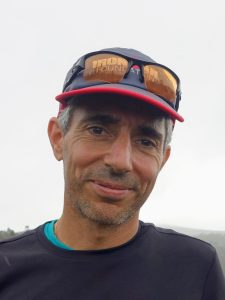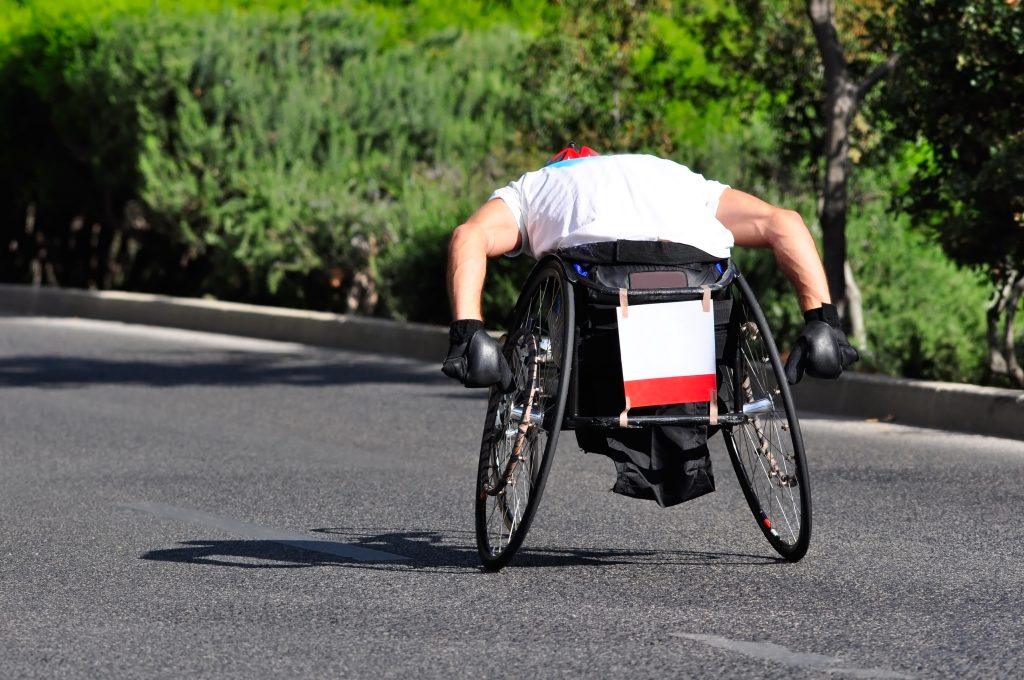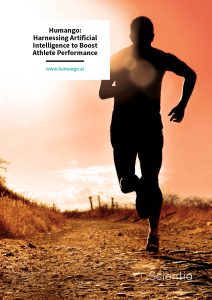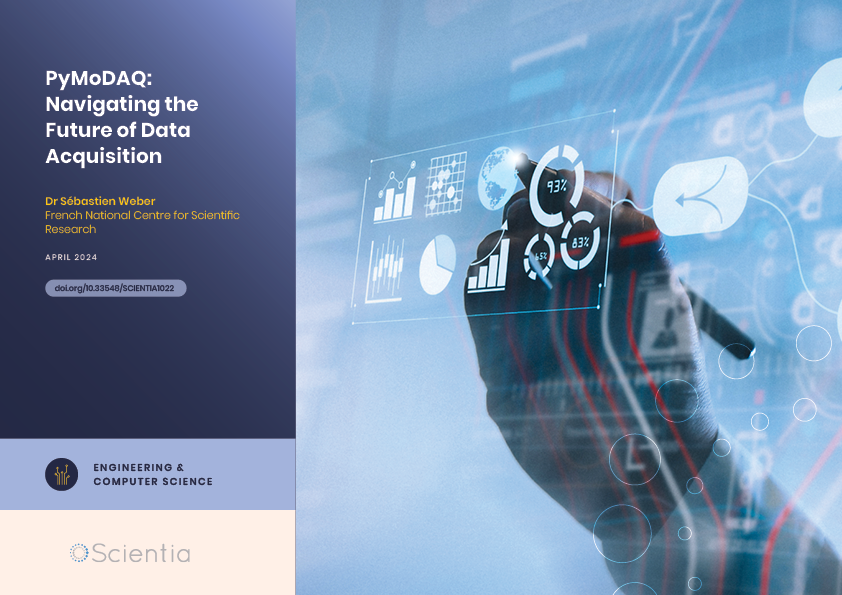Humango: Harnessing Artificial Intelligence to Boost Athlete Performance
 For years, entrepreneurs have been trying to introduce artificial intelligence (AI) to endurance training in a way that makes a substantial difference in athlete performance. From platforms that make short-term adjustments to an athlete’s initial plan to ones that rely solely on subjective feedback for their subsequent prescriptions, the approaches have varied – but the industry has remained relatively unshifted. Now, researchers at Humango have built an AI engine that continuously adapts its recommendations to an athlete’s health data, performance metrics, random alterations in scheduling, and training response all at the same time. Allow us to introduce you to Humango and its founder, Dr Eric Abecassis.
For years, entrepreneurs have been trying to introduce artificial intelligence (AI) to endurance training in a way that makes a substantial difference in athlete performance. From platforms that make short-term adjustments to an athlete’s initial plan to ones that rely solely on subjective feedback for their subsequent prescriptions, the approaches have varied – but the industry has remained relatively unshifted. Now, researchers at Humango have built an AI engine that continuously adapts its recommendations to an athlete’s health data, performance metrics, random alterations in scheduling, and training response all at the same time. Allow us to introduce you to Humango and its founder, Dr Eric Abecassis.
How did you come up with the idea for Humango’s AI-powered fitness app?
Although the company was founded in August 2019, the idea was conceived a year before that in the Spring. I started my endurance career at the age of 37 and, as I learned more about training and the science behind it, I realised that this was something that could be coded. Through a combination of artificial intelligence and sports science, there was a lot that could be done to help athletes train more effectively.
The second dimension was my own frustration with glorified static plans, which are template training plans that are prescribed to multiple athletes, and the almost non-existent leveraging of wearable data. The recommendations, analyses, and plans that I had access to were not taking my own personal metrics and day-to-day life into account – and I could see that this was hindering my performance.
These days, we are producing so much data via reasonably-priced devices, but it’s very difficult to put that data to good use without deep knowledge. By comprehensively analysing data, along with preferred training strategies and scheduling inputs, Humango gives athletes a clearer understanding of their capabilities and how to improve them.
‘By comprehensively analysing data, along with preferred training strategies and scheduling inputs, Humango gives athletes a clearer understanding of their capabilities and how to improve them.’

What makes Humango different from other platforms?
Our platform is goal-oriented, meaning that you first identify your goal. The features that follow then focus on that, with Hugo (our virtual coaching assistant) giving you the personalised guidance you need to reach your goal. Hugo calculates your metrics, makes sense of all your data, and optimises your training plan in real time. You always know that you’re on track to reach your goal because you can see it – you can see your progress and trajectory. So, Hugo very much becomes your accountability partner, which is absolutely key for habit formation.
The second aspect is how we’ve invested in AI. It’s interesting to see everyone talking about and claiming to use AI, but when you dig a little deeper, very often, it’s a relatively simplistic way of looking at things. In today’s market, you have fitness apps that give you workouts or training apps used for logging your activities or interacting with your coach, but there isn’t much yet when it comes to truly adaptive and dynamic planning. And that’s because it’s a complex problem to solve.
I’ve been working in AI for the last 10 years, and it’s not easy to find a good data scientist or AI expert that knows how to leverage the technology to solve a business problem. You need the right mix of people that understand what can be done with the technology, the science, and the domain we are in – and be able to bring all that together into something influential. There are companies that can spend 100 million dollars a year on AI-related software yet still struggle in many ways, and that’s out of reach for most of the smaller companies trying to create a market around AI fitness.
All of the technologists on our team are also athletes, coaches, or exercise physiologists. They know the technology as well as they know the domain – and this balance has been a game-changer for us.

Your AI is proprietary, with a patent on the way. Can you tell us a bit about how the technology actually works?
The question that we answered first and foremost was how can we create a training plan that is optimised for you? It was a very difficult problem to solve because of all the constraints we had to honour: availability, exceptional events, training response, stress load, performance, fatigue, improvement, and the coaching strategy driving the plan, to name a few. Think about it: if you have a user training 6 times a week for an upcoming race, optimising their plan corresponds to analysing 20 trillion solutions and choosing the optimal one. Not only that, but the optimiser also needs to know how to stimulate the different energy subsystems in the athlete’s body to get the expected response without stressing their body so much that they go into overtraining.
The current mainstream approach is to take what we call a ‘semi-static plan’ and tweak it based on a few constraints you set at the beginning and the subjective feedback you provide along the way. This kind of plan is only dynamic and individualised to a certain extent. If it doesn’t take into account changes in your availability, what you plan to do, how you progress, your fatigue, and adjustments to the training strategy that you might need, then it will never be as good as it can be.
Our platform can do that because of the complex solution we developed for tackling these optimisation problems. To make it simple, we search through all of the options in a very sophisticated way. The result is an extremely powerful engine that can calculate a multitude of constraints – in fact, we keep throwing more at it as we fine tune and increase the algorithm’s common sense. We continue to add logic based on the rules that a good plan should always honour and, with this, the optimiser continues to evolve.
To build such an engine, we had to do a couple things. First, we receive a lot of data from wearables, but these sensors sometimes register incorrect data. We needed to engineer an outlier detection scheme for cleaning up these anomalies and making the data 100% usable. This was then combined with metrics calculation – using current data to derive the metrics necessary for interpreting any data we receive from the user in the future. Both the outlier detection and metrics calculation are based on a machine learning algorithm that helps us input the right data into the system.
The second component is our complex event management solution, enabled by the cloud native architecture that we built our software on in preparation for scaling quickly and seamlessly (we’ve partnered with Google as a Google Startup). This is where we track all the changes related to your status, data, compliance, etcetera, and it is what allows Hugo to interact with you via recommendations, suggested changes, and other types of feedback. It’s this natural language processing (NLP) that allows Hugo to really act as your accountability partner – someone you can communicate with and count on.
At the end of the day, we very much see our collective role as being that of managing human outcomes rather than a machine. Prioritising what we know about human response and integrating this with best-in-class technology has remained our top priority.

Who else is working with you on this to ensure its quality both from an AI and sports science perspective?
I think the multidisciplinary team that I was able to bring into this project continues to make all the difference.
Raeleigh Harris, our head coach, provided the configuration we needed (for example, what is the best way to train for a marathon) in order to take the raw engine that we built and make it applicable to endurance training. The raw engine can optimise anything because of the way it’s structured to solve problems, but it takes a real industry expert to configure it properly for producing effective training plans. This is where Raeleigh and her 30 years of experience in endurance training come in.
We also have an Olympic coach, Lance Watson, and high-performance expert, Scott Schnitzspahn, helping us refine our approach when it comes to how we’re calculating the metrics, tracking fatigue, and many other aspects to ensure that the plans Humango produces are realistic and effective. With this, we also received feedback on both the engine and the app itself from 1:1 athlete interviews and our early adopters – about 1,000 athletes and coaches that joined Humango starting in December, 2020.
Not to mention that our data scientists and software engineers are not only outstanding in their field, but are also athletes, coaches, or exercise physiologists themselves. Their knowledge, combined with world-leading AI experts working with us as advisors, allowed us to build the break-through technology that we’re now opening up to the wider market.
Is Humango only for elite athletes?
Not at all. We started with a focus on the athletes that understand structured training because we needed to ensure that our technology and approach made a palpable difference for them. After all, they are the ones focused on breaking the barriers of what their bodies can do in the context of a marathon or triathlon, for example. Making a difference in this audience’s training means enabling new records, fewer injuries, and subsequently, a step forward for the industry as a whole.
That being said, we’ve ensured – through our algorithm and additional features – that the platform also caters to those folks that practice an endurance sport, such as cycling, because they simply want to stay active or enjoy being active in a social setting. These athletes may have raced in the past, but that’s not their main goal. Their goals are more related to maintaining or improving their fitness and Humango allows them to set that as their target. The platform then guides them through the journey of reaching that goal, all while providing a place dedicated to interacting digitally with their training group and updating their individual training plan every time they choose to participate in group activities.
Furthermore, there is an element of accessibility that rests at the core of our purpose. While many people tend to think of endurance sports as something that is only for ‘super serious’ athletes, that’s really not the case. And when you think of the unique effect it has on fit aging and overall wellness (both physically and mentally), you can understand very quickly why it makes all the difference that people realise this. This is why part of our focus is on education – educating people who don’t consider themselves athletes on the fact that there really is an athlete in them, and that athlete is not so far away. This would not be possible without the huge boom in wearable technology, of course, but the optimiser works with manual data, as well. And with the guidance of Hugo, our virtual coaching assistant, anybody can begin their endurance training journey in a way that feels personal, manageable, and motivational.
Last, but not least, it’s important to note that Humango also serves coaches by accomplishing many of the mundane, repetitive tasks that we believe take away from the true art of coaching. With Hugo crunching their athletes’ numbers on a continuous basis, coaches are able to focus on supporting their athletes’ form, technique, overall training approach, and mental wellbeing.

Is the balance between training alone or in a group important?
Yes, because many athletes of all levels would love to go out with their friends for a long Sunday bike ride, but don’t because they’re very strict about following their personal training plan and don’t really know how to incorporate ad hoc social moments like those into their trajectory. With our proprietary optimiser, they are free to spend time with their friends – or even take a day off to spend with their family – without worrying about how that affects their future performance or goal attainment.
Humango recalculates the optimal plan by taking into account what the athlete has done or plans to do with their training partners, and allows them to really see whether they’re still on track or not. Hugo surfaces these insights and uses them to educate the athlete as to how they should modify their behaviour or habits in order to be at their best.
In many ways, we built Humango with the desire for real-life interaction at heart. One of our main goals, from the beginning, was to enable athletes of all levels to reach a better sport-life balance – to train with each other in the physical world and spend more time interacting with others face-to-face.
Finally, what is the ultimate mission of the Humango team?
My life was transformed when I took up endurance sports. I was always the nerdy one, focused more on the intellectual side of life, I would say, but everything changed when I started taking physical exercise more seriously. The shift in my career to eventually become president and CIO of a large company, for example, occurred around the same time I started training. And I believe that to be because endurance sports teach you not only grit, but also humility, patience, and meditation in a way that projects to the people around you.
There’s also the benefits of fit aging to consider. I’m 54 right now, but I continue to progress and – to be honest – I feel better in my body now than I did when I was 25. I take my father as an example: you can still find him on a bike, even though he’s 97 years old. To think that I have another 50 years of active living is definitely a big motivation. I want to share this with as many people as I can.
By giving people of all physical levels access to and guidance through endurance sports, and combining that in the future with nutrition, we are giving them longevity. And it’s this pursuit of wellbeing that we strive for – that is our ultimate mission.
SHARE
DOWNLOAD E-BOOK
REFERENCE
https://doi.org/10.33548/SCIENTIA767
REPUBLISH OUR ARTICLES
We encourage all formats of sharing and republishing of our articles. Whether you want to host on your website, publication or blog, we welcome this. Find out more
Creative Commons Licence (CC BY 4.0)
This work is licensed under a Creative Commons Attribution 4.0 International License. 
What does this mean?
Share: You can copy and redistribute the material in any medium or format
Adapt: You can change, and build upon the material for any purpose, even commercially.
Credit: You must give appropriate credit, provide a link to the license, and indicate if changes were made.
SUBSCRIBE NOW
Follow Us
MORE ARTICLES YOU MAY LIKE
Professor Giorgio Buttazzo | Artificial Intelligence and a Crossroads for Humanity
Where do we stand with artificial intelligence? Might machines take over our jobs? Can machines become conscious? Might we be harmed by robots? What is the future of humanity? Professor Giorgio Buttazzo of Scuola Superiore Sant’Anna is an expert in artificial intelligence and neural networks. In a recent publication, he provides considered insights into some of the most pressing questions surrounding artificial intelligence and humanity.
Professor Martin Trefzer | Bridging Nature and Artificial Intelligence for Smart Electronics Technology
The ever-developing world of artificial intelligence (AI) stands at the tip of a transformative breakthrough. Professor Martin Trefzer from the University of York and Professor Jim Harkin from Ulster University have introduced a revolutionary approach to neural network design. They work on an electronic system based on AI that forms the basis of the cross-disciplinary project called Nervous Systems, which aims to build electronic neuromorphic devices with an artificial intelligence system mirroring the adaptability and responsiveness of biological neural systems.
Dr Jon Tore Lieng | Dynamically Installed Anchors for Floating Offshore Turbines
Effectively harnessing offshore wind presents a valuable opportunity to increase energy supplies. Floating wind turbines present several advantages over traditional fixed turbines in more shallow waters. Dr Jon Tore Lieng from Deep Sea Anchors and colleagues have developed a type of dynamically installed anchor to hold the structures in place while reducing both the costs and complexity associated with installation where cohesive seabed sediments are realised.
Dr Sébastien Weber | PyMoDAQ: Navigating the Future of Data Acquisition
In an era where data is paramount, Dr Sébastien Weber and his team at CNRS, the French National Centre for Scientific Research, are changing the landscape for scientists and engineers with PyMoDAQ, an open-source data acquisition software. Their revolutionary tool stands out for its accessibility, versatility, and the thriving community it fosters.





